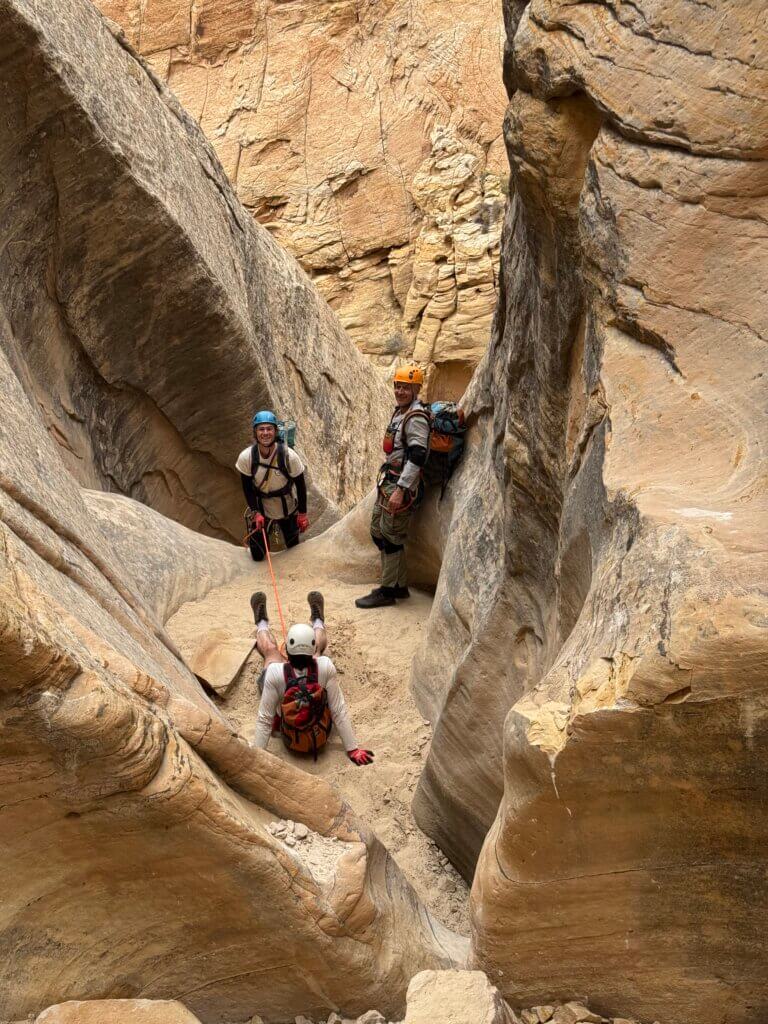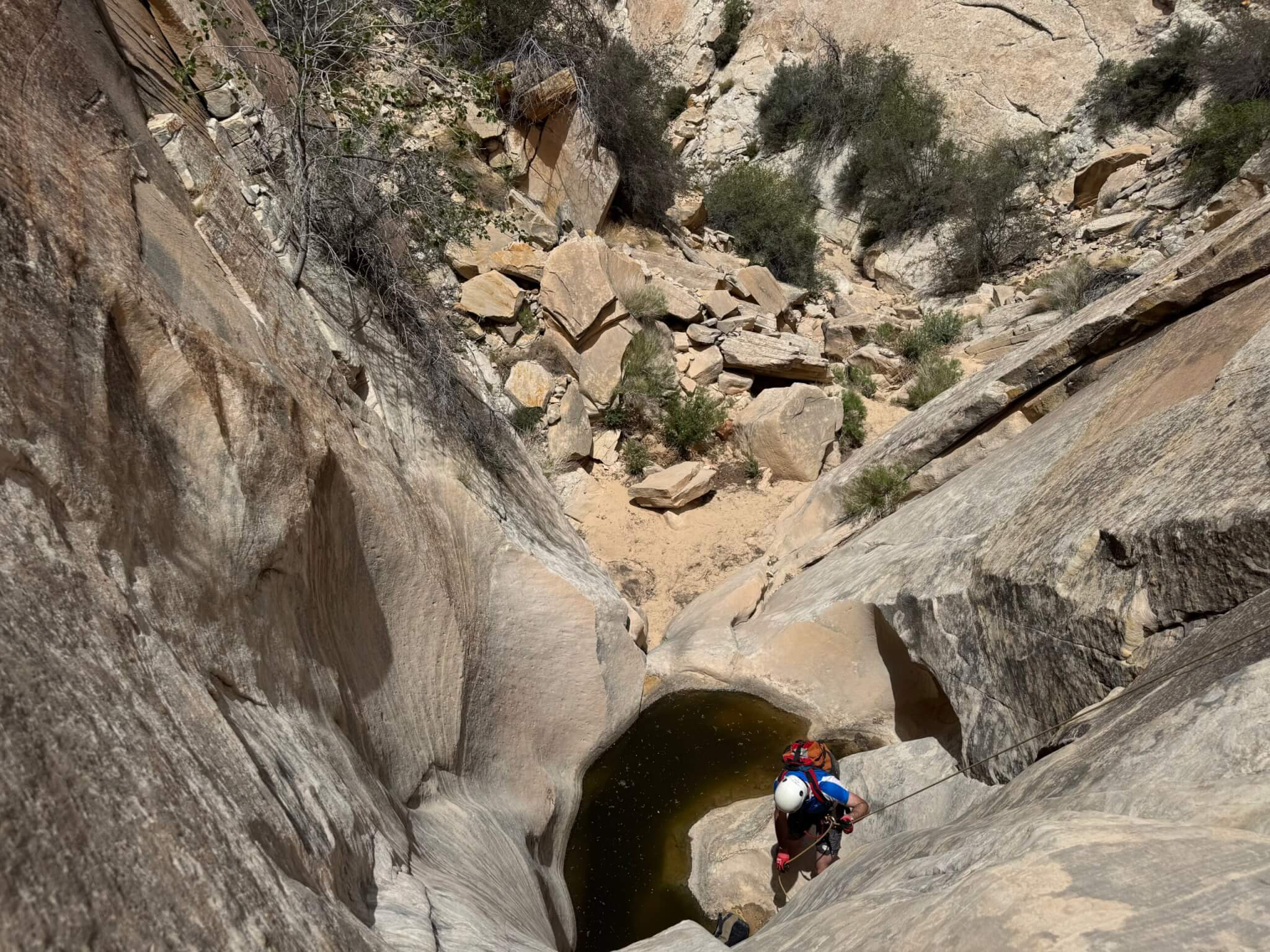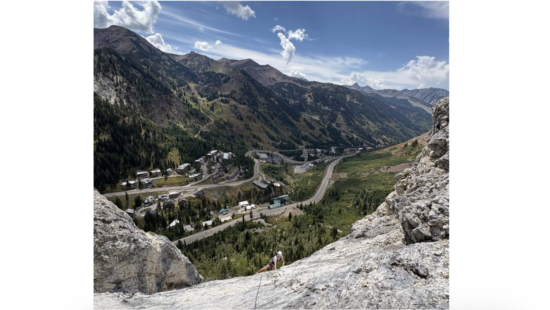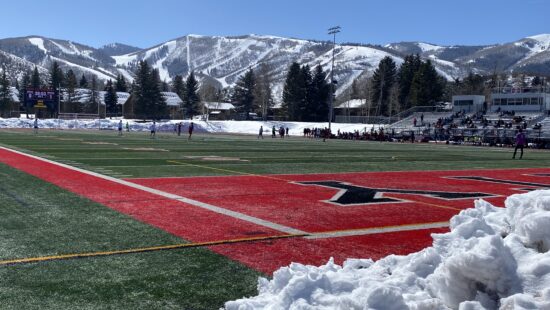Sports
The ins and outs of canyoneering at National Parks

Root Roepke Canyoneering in Canyonlands National Park when the slot is too small to wear your backpack. Photo: Hoffman Family
AMERICAN SOUTHWEST — Tom Jones literally wrote the book on Canyoneering in the National Parks of Utah. That was years ago but just like the famous rock cliffs, walls, formations, and outcroppings his opinion of the matter hasn’t changed much, his message – Safety First.
There’s a dichotomy-of-sorts to adventuring outdoors where there are deep natural canyons, they are there for the taking, go for it, have fun, versus, there are so many other choices to be made out there, this takes an enormous amount of skilled dedication, let’s do something different.
Jones isn’t looking to necessarily deter people from venturing into canyoneering, but simply educate, educate, educate.
Total respect for the environment directly around you sometimes comes down to saying, maybe next time or maybe not at all.

“Canyoneering is not like hiking. People cannot just go do it. Even people familiar with ropes (climbers and cavers) cannot safely go do canyons without some canyon-specific training.” Jones told TownLift. “People who want to get into it should first go with a guide, as in a professional guide. Then take a basic (Level 1) training course, and then they are in a position to go on trips with experienced leaders. Then take Level 2 and Level 3. Then, maybe, go on trips by themselves.”
Rock climbing, bouldering, trail running, hiking, mountaineering, and camping all can be acheived in bitesized little chunks of off-the-griddedness. Canyoneering, however, is outcome determinitive in relation to what the earth has created around, adjacent to, above, and below the canyon one is choosing to start from. Always know where you’ll end up and from there, where’s next to be able to be done exploring a canyon by the timeframe allotted. Maybe that’s a few hours on a day trip, or maybe the backcountry permit you’ve acquired is for multiple days.

On Jone’s website Canyoneering USA, in which he gives free guiding techniques and insights, he discusses canyoneering around Zion National Park, Arches National Park, Canyonlands National Park, Capital Reef National Park.
Canyoneering can be safe, and canyoneering can be fun, that said, here are some key elements to assess when evaluating a canyon for a potential route according to Jones:
- “Potential route” implies a first descent… not something most people get to do.
- Known Canyon: 1. How good is the beta, how reliable is the beta provider? 2. Longest rappel = how much rope. 3. Hardest climbing? How much climbing? 4. How difficult are the anchors to get? What special anchor gear do we need? 5. How wet and cold is the canyon likely to be? 6. How long and hard is the day going to be?
He offers sound advice to someone new to canyoneering who is looking to develop their skills safely.
1. People should first take a guided trip with a professional guide service. If you like it, then 2. People should take a course, usually two or three days. 3. Then people should go out with canyoneers who are experienced, that know what they are doing.
“The most common error,” Jones told Townlift, “is taking on a canyon that is too difficult for their skill set. Mostly this happens when people go canyoneering without getting training.”
To stay updated on the latest techniques, gear, and safety protocols in canyoneering, he says to go out with a variety of people and see what they do. Sometimes they have a different way of doing things that we will find useful.
One of the most important considerations when planning and executing a canyoneering trip, especially in remote or challenging environments is to choose a good team, appropriate to the objectives. Know everyone’s skill levels, and make sure you are all bought into the objective.
Canyoneering ropes have an entirely different level of static or spring built in to them as do traditional climbing ropes. Lengths of ropes are crucially important, for example, as guided Canyoneer Root Roepke told TownLift, “On belay, I had a 198 foot canyoneering rope, and the canyon was 200 feet deep. It was perfect.”
Jones recounted a time when he had to adapt his guiding plans or make a difficult decision during a canyoneering trip due to unexpected circumstances explaining how he volunteered to take a group through the famous Subway Trail in Zion National Park, because it looked like they were going to get themselves into trouble without somebody’s help.
The group he’d met up with was slow; and one of them dropped their harness off their pack, and had to go back and get it. When we got to the actual start of the canyon, I called it – I cancelled the trip. All I could imagine was carrying (as in, actually carrying) the leader person up the final steep exit gully at midnight… better to admit it was not working.
He writes about a trip which was a little more perilous in Lake Powell canyons here.
Jones thinks technology plays a role in modern canyoneering, both in terms of safety and exploration. He believes that GPS helps keep canyoneers from getting lost. Satellite communication allows for rescue when needed. Lighter gear allows us to not work so hard. The internet allows us to find like-minded persons with which to compare and contrast.
We asked him why canyoneering is not more widely publicized? To which he answered that canyoneering is a physically and mentally challenging activity that requires a basic skill set to do safely on one’s own. It is not particularly dangerous, but if you fail to follow demanding rules of nature, the risk to one’s life is real. “Canyoneering almost always requires suffering to some extent,” he adds.
Some specific regions or canyons which Jones finds particularly noteworthy for people to steer clear of unless they’re experts and some beginner canyons to start in?
There are no beginner canyons. There are straightforward canyons in most areas that ‘beginners’ can enjoy as part of a group led by a competent person; but ‘beginners’ cannot safely do canyons on their own. They can get away with it, if they are lucky. In each location, there tend to be a few straightforward canyons that draw low-skill canyoneers just starting out. Avoiding Canyoneering Accidents is a great resource for people just starting out to read.
The San Rafeal Swell, Cedar Mesa, and the Grand Staircase Escalante National Monument regions of Utah are also included in the online Tom Jones Guide to Canyoneering and he lists other reputable organizations for trainings people can learn with and grow with and have fun outdoor adventures with.


















